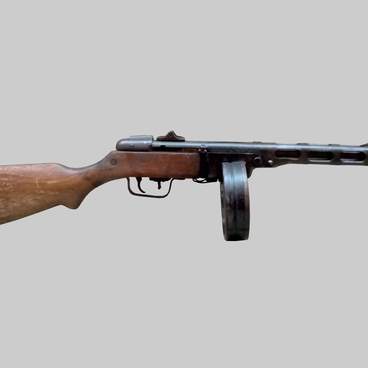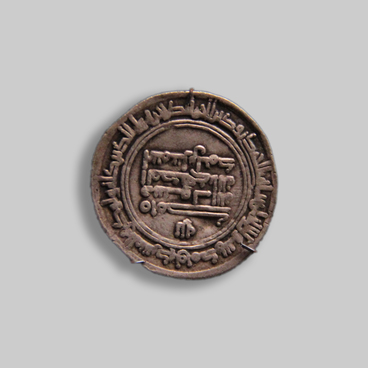This memo is a short historical retelling of the events of one of the campaigns of the Livonian War of 1558-1583. This is virtually the only historical document containing details of the siege and destruction of the Velikiye Luki fortress.
Stephen BAthory, the Grand Duke of Lithuania, after the successful siege of POlotsk was preparing to march on one of the key fortresses of Russia, VelIkiye LUki: ‘We were attracted there by the position of the Luki castle, its fame, the vastness of the region and the abundance of food that our troops could get without any damage to our regions… and finally, the great convenience and speed of managing all other affairs from Velikiye Luki’.
The Polish army advanced in two detachments. One of them was commanded by the Crown Chancellor and Hetman Jan Zamoyski. Having defeated the fortresses of Usvyat and Velizh, both army detachments were reunited at the walls of the Koptev Monastery in the village of Kupuy. Stephen Bathory looked at Velikiye Luki as another Russian outpost destined to falter under the onslaught of the Polish-Lithuanian might, or at least surrender without a fight.
The Velikiye Luki fortress was strategically important: its capture by the Polish army would open considerable space for maneuvers and the possibility of moving deeper into the territory of the Russian kingdom, to Pskov and Novgorod, as well as to Tver and Moscow. At the same time, Bathory had the prospect of cutting off the Russian troops in the northwestern lands from the center.
The balance of forces was not in favor of Velikiye Luki. Bathory’s army, which counted 50,000 men, was opposed by the garrison of voivode IvAn VoeykOv, with 6,000-7,000 people. To reduce the effectiveness of the bombardment of the wooden fortress, Voeykov ordered to cover it from top to bottom with baskets of earth and turf. For this reason, the attack that began on September 1 did not cause serious damage to the fortress walls. Bathory, seeing the impossibility of burning the walls with heated shots, ordered to storm the fortress, but the storm was fought off, and the Polish side lost about 200 people. At the same time, the garrison managed to make sorties, during one of which the royal banner was captured.
As a result of the long siege, the troops of Bathory set fire to the fortress towers several times, and the fortress troops extinguished the fire several times and fought back the attacks. But Bathory’s army still managed to break into the fortress. Hetman Jan Zamoyski ordered his infantrymen to pull the cannons out of the castle. The order was perceived as the beginning of a robbery. All defenders of the city, including Voeykov, fell in the ruthless massacre that began inside the city. The cannons, provisions and other supplies burned in the fire.
The task was accomplished: the troops took the city. But the winners only got ashes and some belongings collected from the corpses. Bathory was able to restore discipline among the troops and force them to restore the defensive fortifications only with the help of extraordinary payments. The work took several weeks and delayed the Polish army’s advance on Rzhev. So the Velikiye Luki campaign ended.
Stephen BAthory, the Grand Duke of Lithuania, after the successful siege of POlotsk was preparing to march on one of the key fortresses of Russia, VelIkiye LUki: ‘We were attracted there by the position of the Luki castle, its fame, the vastness of the region and the abundance of food that our troops could get without any damage to our regions… and finally, the great convenience and speed of managing all other affairs from Velikiye Luki’.
The Polish army advanced in two detachments. One of them was commanded by the Crown Chancellor and Hetman Jan Zamoyski. Having defeated the fortresses of Usvyat and Velizh, both army detachments were reunited at the walls of the Koptev Monastery in the village of Kupuy. Stephen Bathory looked at Velikiye Luki as another Russian outpost destined to falter under the onslaught of the Polish-Lithuanian might, or at least surrender without a fight.
The Velikiye Luki fortress was strategically important: its capture by the Polish army would open considerable space for maneuvers and the possibility of moving deeper into the territory of the Russian kingdom, to Pskov and Novgorod, as well as to Tver and Moscow. At the same time, Bathory had the prospect of cutting off the Russian troops in the northwestern lands from the center.
The balance of forces was not in favor of Velikiye Luki. Bathory’s army, which counted 50,000 men, was opposed by the garrison of voivode IvAn VoeykOv, with 6,000-7,000 people. To reduce the effectiveness of the bombardment of the wooden fortress, Voeykov ordered to cover it from top to bottom with baskets of earth and turf. For this reason, the attack that began on September 1 did not cause serious damage to the fortress walls. Bathory, seeing the impossibility of burning the walls with heated shots, ordered to storm the fortress, but the storm was fought off, and the Polish side lost about 200 people. At the same time, the garrison managed to make sorties, during one of which the royal banner was captured.
As a result of the long siege, the troops of Bathory set fire to the fortress towers several times, and the fortress troops extinguished the fire several times and fought back the attacks. But Bathory’s army still managed to break into the fortress. Hetman Jan Zamoyski ordered his infantrymen to pull the cannons out of the castle. The order was perceived as the beginning of a robbery. All defenders of the city, including Voeykov, fell in the ruthless massacre that began inside the city. The cannons, provisions and other supplies burned in the fire.
The task was accomplished: the troops took the city. But the winners only got ashes and some belongings collected from the corpses. Bathory was able to restore discipline among the troops and force them to restore the defensive fortifications only with the help of extraordinary payments. The work took several weeks and delayed the Polish army’s advance on Rzhev. So the Velikiye Luki campaign ended.



